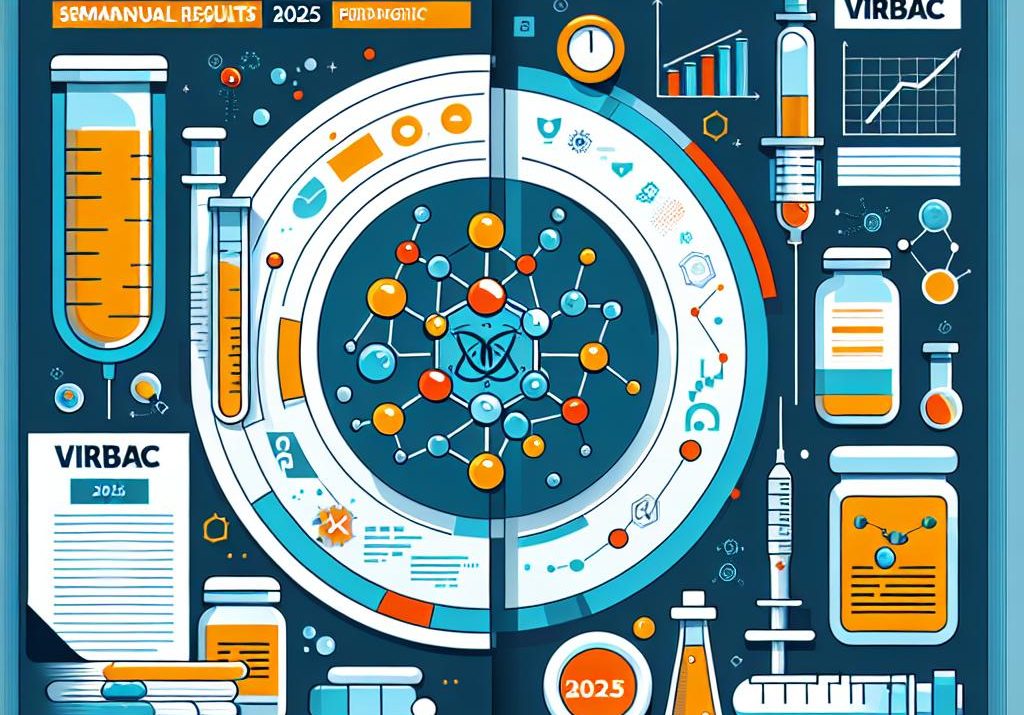Virbac reported first-half 2025 results showing steady top-line expansion and softer profitability, while reaffirming full-year guidance and signaling a measured path on manufacturing localization and R&D. Revenue reached €738.3 million, up 7.8% at constant exchange rates and 5.6% organically, with Sasaeah in Japan contributing 2.2 points to growth and Mopsan adding 0.6 points. Adjusted EBIT came in at €135.0 million, an 18.3% margin versus 21.4% a year ago, reflecting higher inventory write-offs, a temporary antigen production shutdown for maintenance, phasing of operating spend, and FX headwinds. Net income declined 13.3% to €82.2 million, pressured by increased net financial expense tied to currency losses. The company confirmed 2025 guidance of 4% to 6% revenue growth at constant rates and scope and an adjusted EBIT margin of around 16% at constant scope. Net debt stood at €201.4 million, and Virbac continues to target an €80 million cash improvement this year, excluding M&A. A leadership handover is also in motion, with a new CEO taking office on September 1, 2025.
The strategic signal is clear: Virbac is buying growth in targeted geographies while leaning on price and mix to offset volatility in supply and currency. The question for the next two quarters is whether margin pressure is a temporary artifact of inventory and maintenance timing or an early warning of structurally higher cost to serve in biologics-heavy portfolios. The answer will shape how aggressively Virbac and peers invest behind specialty categories where pricing power is durable, versus volume-sensitive segments exposed to commodity cycles and disease dynamics.
For customers and competitors, the mix matters. Western Europe grew 9.4% on the back of bovine vaccines and companion animal dermatology, while North America rose 5.9% constant scope despite distributor inventory corrections estimated at five points of growth, suggesting underlying demand resilience for specialty and dental products in veterinary clinics. Latin America was strong overall, but Chilean aquaculture declined 11.2% amid antiparasitic competition, underscoring a crowded, cost-conscious niche. Australia contracted 11.4% with inventory normalization weighing on the first half, with a rebound expected as stocks normalize. Far East Asia grew modestly, tempered by swine fever impacts in Vietnam. For veterinarians and pet owners, Virbac’s estimated 3.5 points of price-led growth will test elasticity, particularly in markets where insurance penetration is uneven. For farmers, the stability of vaccine supply and field performance remains paramount; the antigen line shutdown highlights how maintenance windows can ripple into margins and availability.
These results map onto broader industry currents. Animal health is mirroring human pharma’s distribution reset, with destocking cycles clouding sell-in signals and pushing commercial teams to pivot toward demand planning precision and account-level data sharing. FX volatility is again asserting itself, challenging cross-market pricing corridors. The move to boost U.S. local manufacturing to roughly two-thirds of revenue this year and near 80% by 2026 aligns with a wider shift toward resilient, tariff-insulated supply chains; Virbac estimates a relatively modest direct tariff exposure in the U.S., an approach others will likely emulate. Incremental R&D investment alongside tuck-in acquisitions suggests a barbell strategy: organic innovation in defensible specialty areas and selective BD to open channels, as seen with Japan and pet food adjacency in Central and Eastern Europe.
The hinge for the back half is operational: do gross margins recover as write-offs and maintenance timing normalize, and can pricing stay ahead of input costs without denting volume? Watch for Australia’s recovery, competitive responses in Chilean aquaculture, and further signals on specialty companion animal categories where real-world outcomes and clinic-level economics increasingly drive adoption. With a CEO transition pending, the next strategic move—deeper bets in Japan and dermatology, or portfolio pruning in underperforming niches—will indicate whether Virbac is prepared to trade breadth for higher-margin conviction.
Source link: https://www.globenewswire.com/news-release/2025/09/12/3149339/0/fr/VIRBAC-résultats-semestriels-2025.html
Jon Napitupulu is Director of Media Relations at The Clinical Trial Vanguard. Jon, a computer data scientist, focuses on the latest clinical trial industry news and trends.







